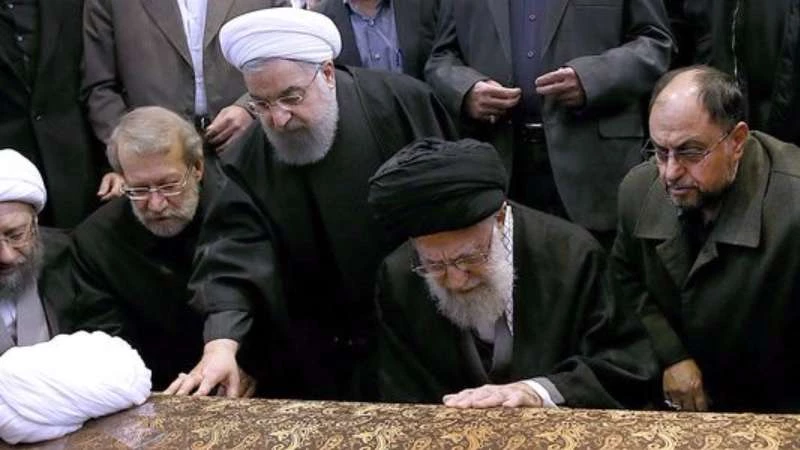The Iranian regime has been eliminating its children since the beginning of the revolution when rivals conspired against Abolhassan Banisadr, a young man close to Ayatollah Khamenei who won the presidency. He fled at night and took refuge in France, and he still fears for his life. Then the Minister of Foreign Affairs Sadegh Ghotbzadeh who was the voice of the revolution was executed. The regime placed leaders and clerics of the revolution under house arrest including Mehdi Karroubi and Mir-Hossein Mousavi because they objected to forgery and misusing power. All of these people were members of the regime and not rivals.
The Iranian opposition has spoken about the suspicious circumstances surrounding the death of Rafsanjani as he was very active despite his advanced age. Even if he died of natural causes, it is certain that the current leadership practically killed Rafsanjani years ago when it abolished him from the scene.
What did he do to be punished? He didn’t do anything against the regime and nor were his stances against it. His differences with the leadership were over details of politics, and this was not the reason for the quarrel as the Supreme Leader is the one who decides.
They feared Rafsanjani because his legitimacy was second to that of the Supreme Leader’s; he was a son of the revolution, was wealthy and was one of the regime’s oldest leaders, making him a target for the arrows of his ruling rivals. Members of his family were accused but he was not accused personally because he was popular amongst traditional Iranians. In addition to this, he had more international connections than any of the other politicians in Iran which he built after he became president, supported the regime’s moderate clerics and contributed to Mohammad Khatami’s rise to power.
Power in Iran is not managed by individuals; it operates collectively like the old communist regimes and does not take into account position and hierarchy. One person is exempt from this – the Supreme Leader who has the last word.
Rafsanjani was a political fox even before he became president and he was keen to be painted as the moderate leader in comparison to the stern faces that we see in the pavilions of the state today. This does not mean that he was moderate according to the standards of the world outside Iran. His fellow politicians called for an end to the west’s embargo on his country years before the nuclear negotiations that led to the same result that they were calling for. However, his rivals did not withdraw until the economic blockade became harsh and threatened the survival of the regime.
The fox of Tehran is the one who led the reconciliation project with the Gulf states in the wake of the war to liberate Kuwait, and was keen to meet the then Crown Prince Abdullah bin Abdulaziz (may he rest in peace) who was the the head of the Saudi delegation to the Islamic summit in Senegal. He went up to him, shook his hand and made peace with Saudi Arabia after solving the problem of the dispute over the quota of Iranian pilgrims. The problem occurred after Saudi Arabia insisted on reducing the number of Iranian pilgrims from 120,000 to 70,000 in line with the Organisation of the Islamic Conference’s decision. The decision was made in response to the destructive operations carried out by the Iranian Hajj missions in Mecca. Tehran accepted its reduced quota and the kingdom agreed that the ceremony of “innocence” could be held but not in the holy sanctuary or its surroundings.
Relations deteriorated again when Iranian intelligence services carried out the Khobar Towers bombing in Saudi Arabia which killed and wounded a large number of Americans. Rafsanjani went to Saudi Arabia where he spent two weeks trying to reconcile the two countries, and he was successful. Relations were ruined for the third time when it came to light that Tehran was involved in the Riyadh bombings in 2004 that were carried out at the direction of Al-Qaeda leaders residing in Iran, a matter which was not denied by Tehran when it was confronted with the evidence. It claimed that the bombings occurred behind its back. As a result, Saudi Arabia, like other countries in the region, did not trust the promises of Rafsanjani or that of any of the regime’s leaders there.
Rafsanjani’s death proves Tehran’s weakness and the failure of its leadership to make the transition from the time of the revolution to a modern and moderate state.
Abdulrahman Al-Rashed (Asharq Al-Awsat)



التعليقات (0)